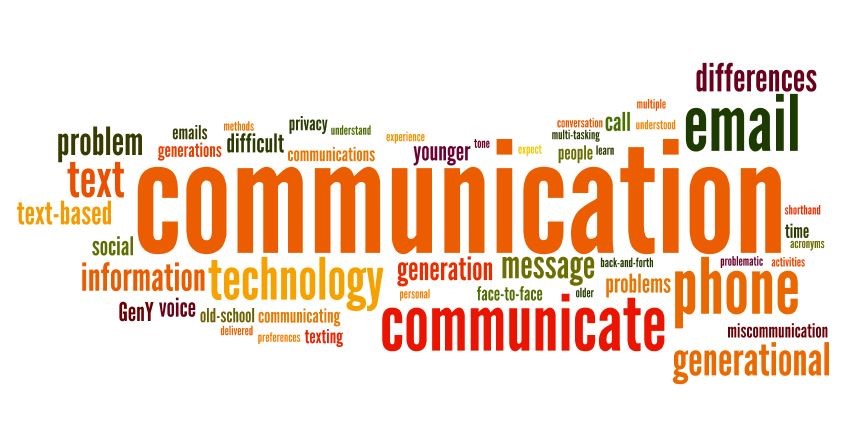
by Barry Mohn – Speak and Write
“Our product managers need to be the CEOs of their products.” This is what a senior director declared at a meeting I attended recently. We were there to discuss leadership training for his Silicon Valley high-tech company, and the focus that day was squarely on his product managers’ ability to communicate.
As the CEOs of technical products, product managers set goals and strategies; oversee product development processes; and manage and motivate people. Furthermore,
 they must document and present to senior management the business impact of their products, as a CEO would present corporate strategy to a Board of Directors.
they must document and present to senior management the business impact of their products, as a CEO would present corporate strategy to a Board of Directors.
Whether in email or in a meeting, communication is the underpinning of these product management activities. How well managers communicate contributes to how well their products do. And since there are no corporate profits without successful products, communication skills had better be good.
The link among communication, products, and business success is born out in a study by consulting firm Towers Watson. In a 2010 report, Towers Watson described the following:
- “Companies with high effectiveness in change management and communication are three-and-a-half times more likely to significantly outperform their industry peers than firms that are not effective in these areas.”
- “Companies described as highly effective communicators had 47 percent higher total returns to shareholders over the last five years compared to companies described as the least effective communicators.” (Towers Watson. Capitalizing on Effective Communication: Communication ROI Study Report.)
These findings from Towers Watson certainly back up the director in his motivation to enhance product manager communication.
How do we spend our time and what makes communication effective?
With the sheer volume of emails, documentation, meetings, discussions, presentations, and phone calls, the time spent on daily communication often dwarfs the time for working alone on projects. A 2012 McKinsey Global study found the average “knowledge worker” spends 28 percent of his or her day on email. Since employees average 260 working days per year, 73 full days are consumed by email.
Furthermore, in their book How to Make Meetings Work!, Michael Doyle and David Strauss state that “middle management spends about 35 percent of their time in meetings while upper management spends upwards of 50 percent in meetings.”
With this staggering amount of time dedicated to daily communication—whether in meetings, on the phone, or by email—it’s vital to know whether the time spent was effective.
“Communication effectiveness” initially seems difficult to put a finger on. Determining whether revenue grew from new products is easy, but knowing whether the communication related to a product launch was adequate or exceptional appears harder to discern.
It’s not.
To gauge a product manager’s effectiveness, communication must be broken down to the measurable and manageable aspects of the product life cycle:
- Clarity of vision for new and existing products based on market assessments
- Strength of product business case to senior management
- Precision of direction given during design and development phases
- Persuasiveness of product positioning and benefits for sales personnel
- Consistency and quality of communication to stakeholders
For each of these, product mangers should ask themselves: Am I tailoring the message based on the audience? Am I delivering the right content? Am I providing too much or too little information? Am I articulating succinctly? Am I communicating changes quickly and clearly? Am I proactively managing, updating, and motivating stakeholders?
These activities and questions help move communication from a so-called soft skill to a tangible aspect of product management. Product managers should perform a self-assessment and survey stakeholders for each of these to create a baseline of performance. They can then use that information to establish goals and strategies for improvement.
What are the skills to develop for communication effectiveness?
Before doing any assessments, most managers believe they’re decent communicators while they also on occasion admit to the need for improvement. But there’s a significant difference between being a decent communicator and an exceptional one. Bridging that gap is what separates a manager from a leader.
Have you ever attended a presentation during which the speaker had everyone’s rapt attention from start to finish? Have you been in awe of someone who could
eloquently express ideas in documents and emails? Have you ever walked out of a meeting amazed by a person who brilliantly facilitated a difficult discussion?
These are the leaders. These are the people who have honed their communication skills. These are the product managers who successfully become the CEOs of their products.
These leaders often possess four key skills, which all product managers should emulate:
1. Become an active listener.
Effective communication begins with listening. Stephen Covey in The 7 Habits of Highly Effective People tells us, “We have such a tendency to rush in, to fix things up with good advice. But we often fail to take the time to diagnose, to really, deeply understand the problem first.”
Before dashing off a curt email in response to a delay in product development, seek to understand the reasons behind the delay; read the mood, dynamics, and complexity of the situation; and hear the people involved. By doing so, your communication will be more thoughtful, appropriate, and successful in the end.
When in face-to-face discussions or meetings, become an active listener by providing your full attention to the speaker. Avoid interrupting—truly listening is different from waiting your turn to jump in. Show interest in what the person is saying, recap main points, and probe for more information. This is what makes people feel heard and develops trust between you and them.
2. Match the content to the audience.
Not all information is created equally nor is it all valuable. People often feel the need to convey everything they know simply because they know it. I once heard a Chief Technology Officer respond to this information overload with, “Don’t tell me what you want to tell me; tell me what I need to know.”
Effective communicators don’t spray content with a fire hose when a glass will do.
Avoid “data dumps.” Pare down and deliver only the information necessary for the recipient to understand the main point, make a decision, or take action. One occasion might call for an executive summary while another might require intricate details. On a dime, be able to modulate your message, style, and tone based on the audience.
Moreover, adopting a deductive approach to communication is usually most effective. Begin with a high-level overview of your ideas to orient your listeners before jumping into the supporting details.
3. Tap into the power of storytelling.
Stories illustrate ideas and engage listeners. In politics, for example, grasping the financial ramifications of unemployment can be abstract until hearing a politician tell the story of someone who’s lost a job. Politicians don’t tell stories by accident; they tell them to humanize an issue and create a compelling case for change.
In the Harvard Business Review article “The Irresistible Power of Storytelling as a Strategic Business Tool,” author Harrison Monarth explains how “storytelling evokes a strong neurological response.” To prove this, he summarizes Neuroeconomist Paul Zak‘s research:
Our brains produce the stress hormone cortisol during the tense moments in a story, which allows us to focus… Other neurological research tells us that a happy ending to a story triggers the limbic system, our brain’s reward center, to release dopamine, which makes us feel more hopeful and optimistic.
Becoming an effective storyteller is a skill that has to be developed like any other. Practice builds confidence in the ability to apply stories to business situations. To develop stories, draw on previous experiences. Include well-developed themes, plots, and characters; drama or conflict; and vivid, descriptive words. Don’t lose your audience by overdoing the background or details. Keep stories focused and tight.
4. Use common language.
Aristotle once said, “Think as wise men do, but speak as the common people do.” Too often in business, people use inflated vocabulary and drawn-out sentences in the false sense that they come off as more intellectual or professional. Or, they bandy around business jargon because they sound as if they’re “in the know.”
The goal of business communication is clarity of thought and speed of understanding. The longer the words and sentences, the harder the idea is to easily understand. Business jargon is so overused that it actually prevents creative or original thought.
Use short, simple words to convey ideas. A central adage for writing is this: Write to express, not to impress. There’s no reason to write “gain financial traction” when we can more clearly use “grow revenue.” In The Elements of Style, E.B. White summed it up this way: “Do not be tempted by a twenty-dollar word when there is a ten-center handy, ready and able.”
All moments of communication—whatever the medium—can be capitalized on or squandered. Poorly developed presentations don’t contribute to communication but instead sabotage it. Unclear emails prevent stakeholders from understanding direction and taking specific action. Mind-numbing meetings leave participants confused and uninspired.
On the other hand, implementing the four skills described above provide product managers a step up and help them seize each communication opportunity with vigor. Since communication ability is a yardstick for performance, and because people judge one another on the way they communicate, showing command of communication skills is crucial to a product manager’s job, products, and company. If successful, product managers can indeed become the CEOs of their products.
Barry Mohn, President of Speak and Write, trains workshops on clear, compelling, and concise communication to corporate employees around the world. Visit www.speakandwrite.com or contact him at 775-762-8322 for information on his workshops.
